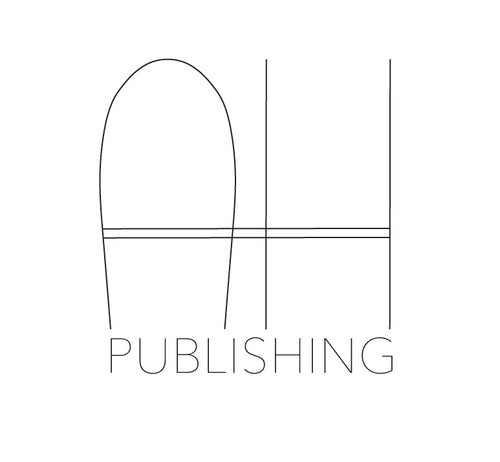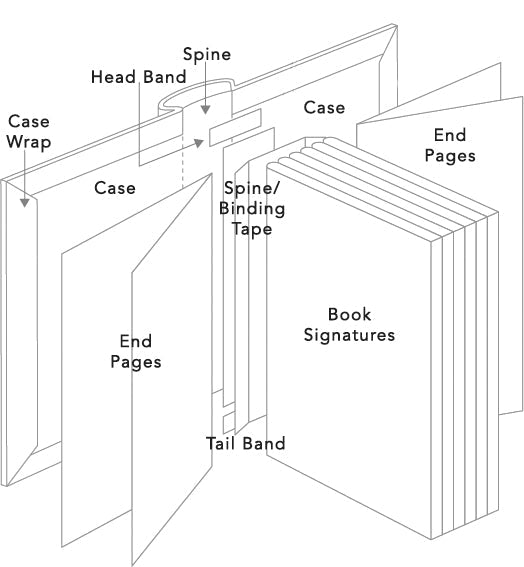Before we proceed with book specifications, below is a diagram of the anatomy of a hardbound book for reference to familiarize yourself with some of the language used in the previous post and in the following posts.

Here is a brief glossary of terms:
Binding Type: Hardbound, softbound (sometimes called paperback), flexibound (a hardbound cover over card stock instead of book boards to provide a flexible feel to the binding), board book (children’s books mostly), Swiss-bound, OTA-bound, exposed-thread binding, quarter-bound, Japanese binding, etc. There are many binding types, and a book’s specifications will indicate the type of binding.
Case/cover: A case and cover refer to the same thing, but when a book cover hardbound it is referred to as a case (it encases the book’s pages). A cover merely covers the pages and is the terminology used for softbound books without ends.
Head and tail bands (H&T bands): These are thin strips of cloth glued to the top (head) and bottom (tail) of a book’s spine to hide the binding in the spine. They are a book’s equivalent of a pocket square and provide a subtle design element for hardbound books, which both hide the spine glueing and provide an accent of color.
End pages (ends): End pages are a practical element in hardbound books and are used to glue the case (or for OTA-bound books, a cover) to the book’s signatures. They hide the case wrap that wraps around the case and, along with the binding tape and backing, secure the book signatures to the case.
Spine: A book’s spine is the long end of a book enclosed. It is where the folios fold into pages and where the book’s case is secured to the book signatures/pages. It traditionally is glued down using a backing or binder’s tape, though there other spine backings used on occasion to provide slightly different binding types and openings for a book.
Case wrap: While the case refers to the overall case/cover of a hardbound book, a case wrap is the printed element of the case that wraps over book boards to form the full casement of the book. Common case wrap materials are paper printed and glued over boards (PLC) and cloth.
Book Signatures: A book that is printed and sewn prints in a signature. A signature refers to the pages that print on the same sheet of a book, which is then folded and cut to create a book signature. Industrial printers for books do not print single-pages per sheet, but many pages in increments of four on a large sheet. Some printers are sheet fed with large sheets, and some printers are fed with large rolls of paper that are then trimmed during the print process into signatures (web-fed printing). For longer books, several signatures are then stitched and glued together to create a book block (all the signatures of the book). Not all books are sewn, and it is common for cheaper softbound books to be trimmed on all four sides with no stitching and for glue to be used to bind the pages together on the spine side. Glued binding is typically done with Polyurethane Reactive Adhesive (PUR binding).
Jacket: Some books have a jacket, originally called a dust jacket. As the name implies, the original intent of a jacket was to protect the book’s case from dust and damage. It often contained a book’s marketing materials and was removed by users down the line as it would be damaged and fall apart while protecting the book through its early years of use.

